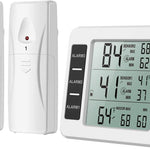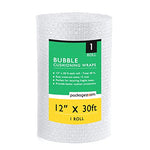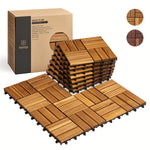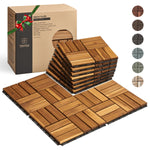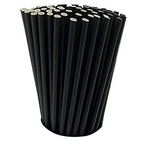You have no items in your shopping cart.
Are you wondering what a flea looks like? Fleas are tiny insects that are hard to see with the naked eye. However, they are notorious for causing discomfort to pets and humans alike. Fleas can infest your home, and it's essential to know what they look like to identify and eradicate them. In this article, we will cover everything you need to know about fleas, including their appearance, life cycle, and how to get rid of them.
Fleas are parasitic insects that feed on the blood of animals and humans. They are tiny, wingless, and have a flattened body that helps them move quickly through the fur of their hosts. Fleas are known for their ability to jump up to 100 times their body length, which allows them to move from one host to another easily. Fleas can also survive for several months without feeding, making them challenging to eradicate once they infest your home.
What Does a Flea Look Like?
Fleas are small insects that are about 1/8 inch long. They are reddish-brown in color and have a flat, narrow body that helps them move quickly through fur or feathers. Fleas have six legs, and their hind legs are particularly large, which allows them to jump long distances. Fleas have a tough exoskeleton that protects them from damage, and they also have tiny spines that help them move through fur or feathers. Fleas are often mistaken for other insects, such as ticks, bed bugs, or lice, but they have some distinct characteristics that set them apart.
Flea Eggs
Flea eggs are tiny, white, and oval-shaped. They are about 1/50 inch long and are often found in pet bedding, carpets, or other areas where pets spend a lot of time. Flea eggs hatch within two to 14 days, depending on the temperature and humidity. Once the eggs hatch, they release small, white larvae that feed on organic material, such as flea dirt, skin flakes, and blood.
Flea Larvae
Flea larvae are small, white, and worm-like. They are about 1/4 inch long and have no legs or eyes. Flea larvae feed on organic material, such as flea dirt, skin flakes, and blood. They prefer dark, humid places, such as carpets, bedding, or cracks in floorboards. Flea larvae can live for several weeks before they spin a cocoon and pupate.
Flea Pupae
Flea pupae are cocooned larvae that are about 1/4 inch long. They are usually found in carpets, bedding, or cracks in floorboards. Flea pupae are difficult to see, as they are well-camouflaged and blend in with their surroundings. Flea pupae can survive for several months, even in adverse conditions, such as extreme temperatures or low humidity.
How to Identify Flea Bites
Flea bites are often mistaken for other insect bites, such as mosquito or bed bug bites. Flea bites are typically small, red, and itchy. They are often found on the legs or ankles, but they can also appear on other parts of the body. Flea bites usually occur in clusters or lines and can cause a severe allergic reaction in some people. If you suspect you have been bitten by fleas, it's essential to clean the affected area
immediately and apply an anti-itch cream or take an antihistamine to alleviate the symptoms.
How to Get Rid of Fleas
Fleas can be challenging to eradicate once they infest your home. However, with the right approach, you can get rid of fleas and prevent them from coming back. Here are some ways to get rid of fleas:
1. Vacuum
Vacuuming is an effective way to get rid of fleas and their eggs. Vacuum your carpets, rugs, and furniture thoroughly, paying particular attention to areas where your pets spend a lot of time. After vacuuming, dispose of the vacuum bag outside and wash your pet's bedding in hot water.
2. Flea Control Products
There are many flea control products available, such as flea sprays, powders, and spot-on treatments. These products are designed to kill fleas and their eggs and prevent them from coming back. Follow the manufacturer's instructions carefully and use the products as directed.
3. Professional Pest Control
If you have a severe flea infestation, you may need to call in a professional pest control service. Pest control professionals have the knowledge and equipment to eradicate fleas quickly and effectively.
FAQs
Q1. Can fleas live on humans?
Yes, fleas can live on humans, but they prefer to feed on animals. Fleas may bite humans if there are no other hosts available.
Q2. How long can fleas live without a host?
Fleas can survive for several months without a host, as long as they have access to organic material, such as flea dirt, skin flakes, or blood.
Q3. How do fleas jump so high?
Fleas have powerful leg muscles that allow them to jump up to 100 times their body length. They also have a tough exoskeleton and tiny spines that help them grip surfaces and launch themselves into the air.
Q4. Can fleas cause diseases?
Yes, fleas can transmit diseases, such as bubonic plague, murine typhus, and cat scratch fever. However, these diseases are rare and usually occur in areas with poor sanitation.
Q5. Can fleas infest birds?
Yes, fleas can infest birds, particularly domestic birds, such as chickens and pigeons. Fleas can cause discomfort and health problems in birds, and it's essential to treat them promptly.
Q6. How can I prevent a flea infestation?
You can prevent a flea infestation by keeping your home clean and vacuuming regularly. Wash your pet's bedding in hot water, and use flea control products as directed. You should also treat your pets with flea prevention products, such as flea collars, spot-on treatments, or oral medications.
Conclusion
Fleas are tiny insects that can infest your home and cause discomfort to pets and humans alike. Knowing what fleas look like and how to identify them is essential for eradicating them and preventing them from coming back. Vacuuming regularly, using flea control products, and treating your pets with flea prevention products are all effective ways to get rid of fleas. If you have a severe flea infestation, consider calling in a professional pest control service to help.


